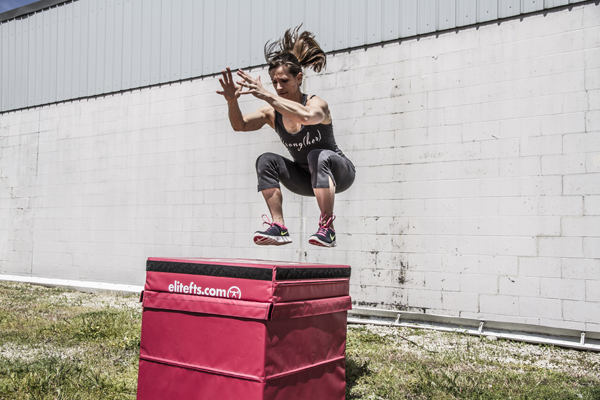Set Realistic Training Goals and Rotate Them Periodically
Firstly, choose clear and specific fitness and/or performance goals, if possible. If you are not training for anything specific such as a sporting event or physical challenge it can be a bit tricky to figure out. If you are unsure of which goal or goals to target, attain the help of a qualified health professional such as strength coach or personal trainer if they are more fitness and performance-based goals or a physician if they more health-related goals to help you determine them.
Most of us are usually not training for anything specific we often focus on one goal too intensely or try to do too much all at once. Either way, progress usually stalls and/or we get injured. And as we age, injuries become more common and easily occurring. It is often because of the high repetition movements and training or working out the same physical qualities for too long. For example, for those of you weight training in an attempt to get bigger and stronger for a long period of time have a had an injury or aches and pains which forced you to reduce training intensity or take time off. A simple solution could be to change your training goal(s) before it happens. Focus on weight training for a few months then switch to cardio and mobility/flexibility and keep strength on maintenance. This will take load off certain joints and soft tissue and help them actively recover while working on a different focus and perhaps making your overall fitness levels more well-rounded. I am not suggesting to completely switch to another goal and allow other parts of your fitness to fall off, but to simply shift emphasis. Here are examples of fitness and performance goals:
- increase squat strength (increase by 20 lbs within 2 months)
- reduce bodyfat (by 5% in 3 months)
- increase flexibility and mobility (be able to touch toes from standing)
- be able to do a handstand
- increase vertical jump (by 2 inches in 3 months)
- jog/run faster (take off 5 minutes from your 10 km time)
- build bigger arms (gain 2” on upper arms)
The goals listed above vary but each is specific and realistic in the right circumstances. Setting Realistic goals can be more difficult than it sounds since it seems you almost have to be an expert in fitness or very in tune with your own body to discern what is feasible and what is not. Whenever in doubt, get the advice of an expert to assist you in goal setting, whether it be a trainer, coach, dietician or physician. Once you choose one or two goals and get after them with a thoughtful approach to training.

Nice Hops!
Here is an sample of a year-long training goal plan:
January
Primary Goal: Hypertrophy Training (8-12 reps)
Secondary Goal: Mobility/Flexibility (ex. yoga, active stretching)
February
P: Strength Training (3-6 reps)
S: Cardio Aerobic Base/Capacity (120-150 BPM)
March
P: Kettlebell Routines
S: Jump Training (box jumps, non-plyometric jumps)
April
P: Kettlebell Routines
S: Jump Training (plyometric jumps)
May
P: Training for “Tough Mudder” (Event in late June)
S: Strength Maintenance (maintain as much strength as possible while training for Tough Mudder, which is running intensive)
June
P: Training for “Tough Mudder”
S: Strength Maintenance
July
P: Hypertrophy Training (8-12 reps)
S: Mobility/Flexibility
August (lower intensity month)
P: Strength Maintenance
S: Cardio Aerobic Base
September
P: Squat Training (increase squat max 10 lbs, by the end of October = 20 lbs)
S: Bodyweight Exercises, Strength Maintenance
October
P: Squat Training (increase squat max additional 10 lbs)
S: Agility, Speed
November
P: Metabolic Conditioning (for improved body composition, weight loss)
S: Mobility/Flexibility
December (lower intensity month)
P: Hypertrophy (8-12 reps)
S: Cardio Aerobic Base
IMPORTANT: if your training is consistent and progressing it is a good idea to GO EASY (60-70% intensity) FOR ONE WEEK EACH MONTH OR SO for ACTIVE RECOVERY and the promotion LONG-TERM PROGRESS and INJURY PREVENTION. However, often in our busy lives we end up having unintended breaks such as illness or busy schedules, which prevent us from being consistent and serve as a sort of RECOVERY so we can continue to train with adequate intensity, avoiding burnout or OVERTRAINING.
